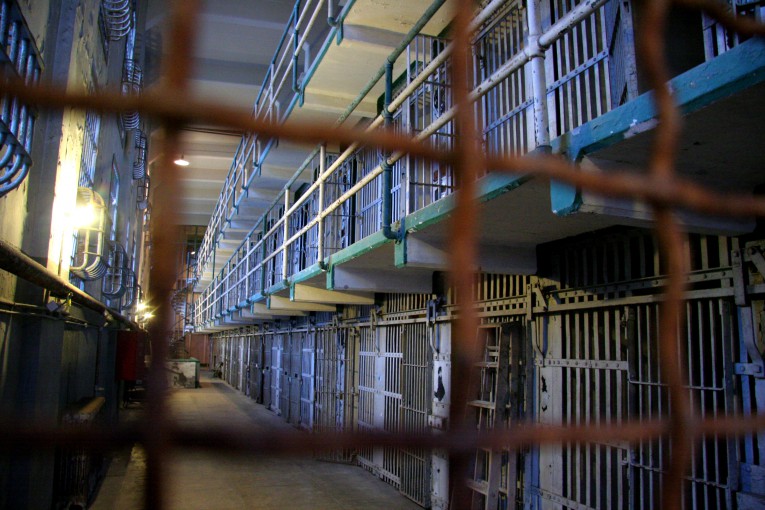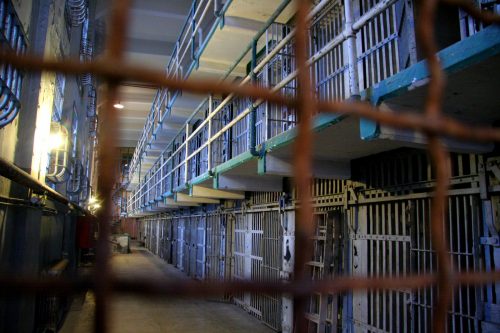

By Audrey Sawyer, Belen Avelar and Vaiva Utaraite
PHILADELPHIA, PA – In the U.S., Native Americans are—according to a report by the “Safety and Justice Challenge”—over incarcerated as part of an effort to erode Native culture and laws that reject tribal justice systems.
The report suggests these actions have negatively impacted the lives of Native Americans and have created a complicated jurisdictional system.
As a result of this jurisdictional system, Native Americans lack representation for the accused in tribal courts, notes the Safety and Justice Challenge report, which adds “in many cases, tribal governments are not obligated or required to provide counsel for an indigent person, ultimately creating uncounseled convictions in tribal courts and affecting many native people getting involved in the justice system.”
Ways to improve the over-incarceration of Native people in the U.S., according to the report’s authors Desiree L. Fox, Ciara D. Hansen & Ann M. Miller, would be to provide “supportive and restorative systems such as a holistic public defender service would help address the issues and the involvement of native people falling into the criminal justice system.”
Understanding the factors that play a role in the involvement in crime will improve the “overall life outcomes of native people that will predictably result in less criminal justice involvement,” said the report.
The Safety and Justice Challenge report highlights the article on “The Tribal Defenders Office (TDO) for the confederated Salish and Kootenai Tribes that has implemented holistic defense to help in a tribal setting.”
The purpose of the Tribal Defenders’ Holistic Defense practice is “to align with tribal values by going beyond the criminal case to view the accused as a whole person with a range of legal and social support needs that, if left unmet, will continue to push them back into the criminal justice system,” the report notes.
The aim of the tribal defender’s team is to help provide and defend indigent people and bring a sense of community and make the clients feel heard while listening to the feedback they provide to improve the program better.
Native people have faced many challenges throughout history, “dealing with forced confinement, inequality, and displacement from their home territories,” said Fox, Hansen, and Miller.
The authors note Native people were subjected to many challenges, including their children being placed in “boarding schools, orphanages, mental hospitals, and incarceration in jails and prisons.”
Fox, Hansen, and Miller discussed disparities between different cultures and how they have always been an issue in society, and Native Americans are the ones who deal with the inherent systematic racism and ongoing violence.
According to the report’s authors, native people go by a “self-governing system that has been effective and centered on tribal values from elderly teachings that bring about the characteristics and beliefs of being held accountable.”
“Indigenous justice systems mediated conflict, restored tribal harmony, and ensured restitution by focusing on restoring balance and relationships rather than ascertaining guilt and exacting punishment,” added The Safety and Justice Challenge report.
The study cites the removal era from the 1830s to 1860s, when “[t]he Cherokee Nation also known as the Trail of Tears and well-known example of the loss of thousands of Native people during the forced move from their homeland.”
Fox, Hansen, and Miller said that experience is a prime example of the restricted access and control Native people faced.
The “Indian problem” was an issue that was trying to be solved by the U.S. government, according to the report, and the phrase “Indian problem” placed a target on Indian people because it “created trauma and an indirect impact that caused Indian people to feel attacked, traumatized, and face inequalities.”
The constant removal of Native people from their homeland was the “well-known fact that most tribes were moved from or restricted access to their traditional homelands to allow for the encroachment of settlers moving further west,” added Fox, Hansen, and Miller.
According to the report’s authors, “the continued use of treaties being forged or signed unconstitutionally with unfulfilled promises justified the government’s removal of Native people from their homeland,” placing Native Americans in a lifestyle they are forced to follow.
“Native people were expected to adopt and follow the European lifestyle, including Christianity and farming, even though much of the reservation lands were not suitable for productive harvests,” said Fox, Hansen, and Miller.
While the 2020 Bureau of Justice Statistics report indicates that tribal jail incarceration rates have increased by two percent from 2017 (a portion of a steady rising since 2000), a more recent report displayed a significant drop in tribal jails during the COVID-19 pandemic.
Forty-five percent of individuals incarcerated in tribal jails were held pretrial, with pretrial detention rising to 80 percent from 1999 to 2018. Sixteen percent of those in tribal jails are for public intoxication, with 15 percent for either DUI-related or drug-related offenses.
Data from the Office of Juvenile Justice and Delinquency Prevention states Native youth are much more likely to be convicted as adults, with a particular focus on drug-related crimes. The Commission argues that if there is to be any effort made to reduce recidivism among natives, there must be mass movements to address levels of drug and alcohol usage.
According to the Bureau of Justice Statistics, Natives experience violence at rates evaluated more than twice the national average and much more above rates compared to other ethnic or racial groups in the United States.
Natives are more likely than other races to experience violence from a member of another race. While the native communities are not an outlier when evaluating inequality from the justice system, Native communities have already been subjected to centuries of systemic violence and economic equity and face unusual circumstances.
One solution to be adopted is considered the “holistic defense,” which contains four central pillars.
The Safety and Justice Challenge report discussed that “first is seamless access to services that meet legal and social support needs.” The second is a “culture of open, frequent, meaningful communication that is centered on the client.”
The third is “a holistic defender must have an enhanced skillset beyond legal advocacy to be conscious of the underlying issues driving their clients into the criminal justice system, and last, is [whether] there is a robust understanding (connection) to the community served.”
The holistic defense is mentioned to be restorative in nature by addressing issues that bring those into the criminal justice system by emphasizing the individual within the context of their community. The “Tribal Defender’s Office” started its holistic practice by altering existing staff roles to meet their clients’ needs.
According to the Safety and Justice Challenge report, the TDO staff integrated grant funding programming with the essential mission to represent the accused in tribal court, look to fill gaps in services, and assist clients in having superior life outcomes.
Among many collaborators of the holistic defense include the Justice and Mental Health Collaboration Program and Flathead Re-Entry Program.
Some of the services that the Flathead Re-Entry program provides are driver’s license restorations, pro se clinic (receiving help drafting pleadings to file in tribal court), permanent supportive housing, and connectivity during the pandemic (helping set up ZOOM access so clients could attend court and access behavioral health providers remotely).
Holistic defense includes adhering to cultural safety, listening to clients and community, investing in culturally relevant research, and services provided before the court dispositions. Adhering to cultural safety refers to cultural humility, which frames the goal by listening, learning, and recognizing one’s bias and lack of knowledge.
“Cultural safety allows others to bring their identity and experiences without any judgment and refers to all emotional, spiritual, psychological and physical levels,” added Fox, Hansen, and Miller.
The report notes the National American Indian Court Judges Association provides “tribal court advocacy training and holistic approaches to civil and criminal legal assistance in tribal justice systems.” Similar to this organization is the Victim Assistance to Support Tribes program, The National Center for Victims of Crime branch.
The Safety and Justice Challenge suggests Muscogee Creek “is considered one of the leading reentry programs in the nation,” and provides services that “address all aspects of reentry including financial assistance, housing assistance, career development, culturally relevant programming, supervision, and legal counsel.”
In the Peacemaking Probation Department, “youth participants are immersed in a four-day wilderness camp that teaches traditional Native cultural and spiritual values through crafts, educational presentations, and wilderness living,” the report notes.
Exclusively on the Cherokee Reservation, “Heart-to-Heart” works collaboratively with “a multi-disciplinary team to ensure that their work is trauma-informed, culturally competent, and child-focused,” the study adds.
Native people “have survived the taking of lands and federal efforts to undermine Native culture,” leaving them with “historical trauma and the soul wounds,” according to Fox, Hansen, and Miller.
They noted, “Federal laws and policies that addressed the sovereign, dependent nature of tribal governments have resulted in complicated criminal jurisdiction that results in more exposure to criminal prosecution,” on top of an almost non-existent availability of indigent defense.
However, the authors add, with the help of tribal justice systems “offering services that are culturally relevant, restorative, and fair,” Native people are entering a new era of restorative justice with the proper tools at their disposal.
Fox, Hansen, and Miller conclude, “In order to elicit sustainable change, tribal public defenders could work with their clients in the context of their community—their families, their elders, their values, and their definitions of success.”




